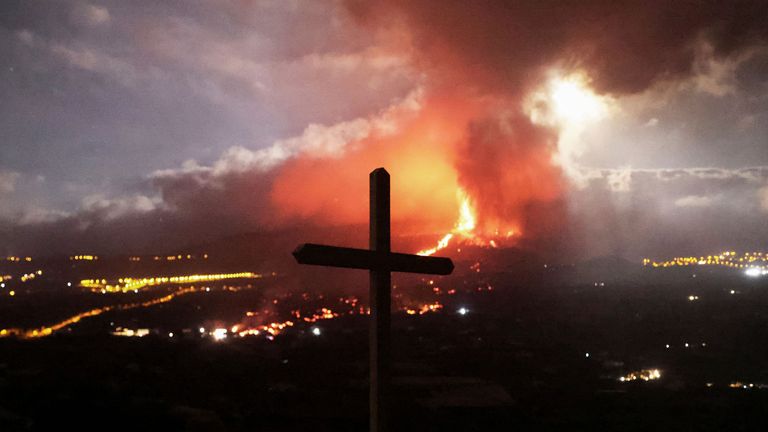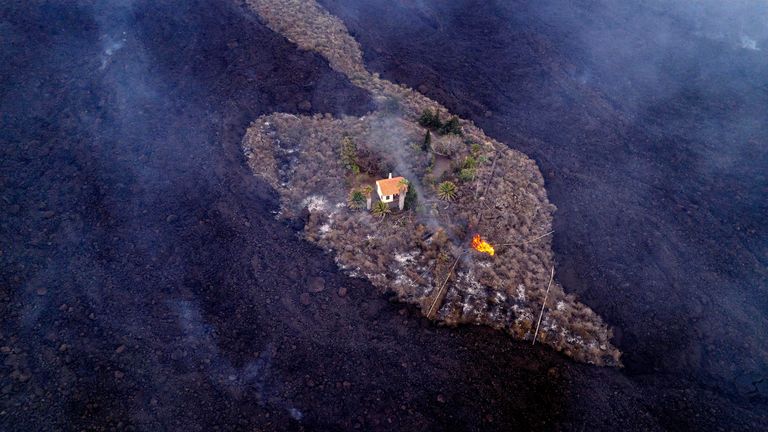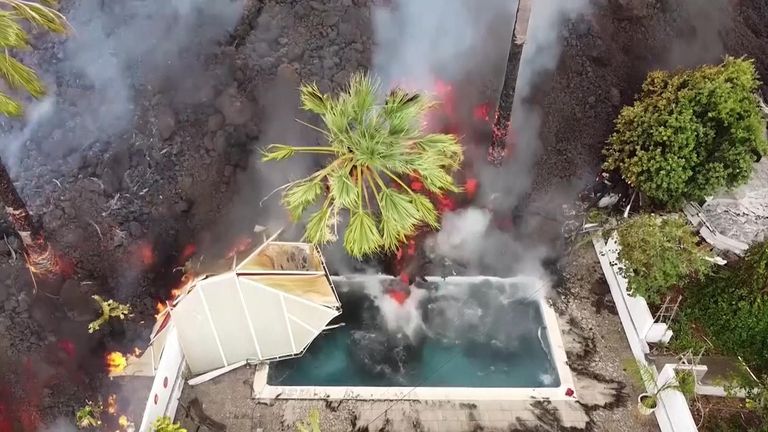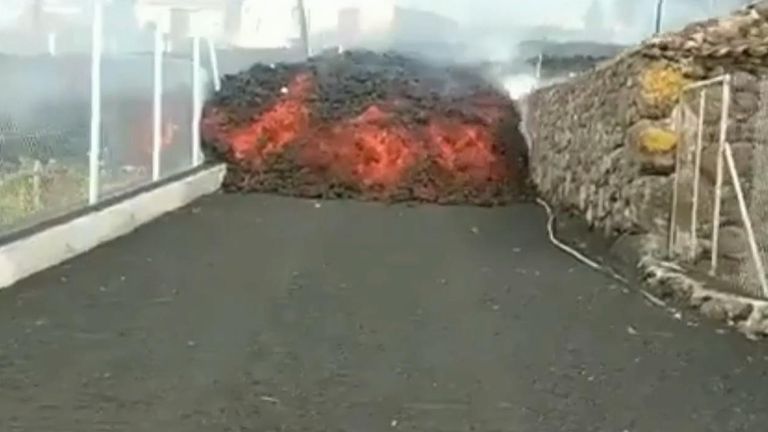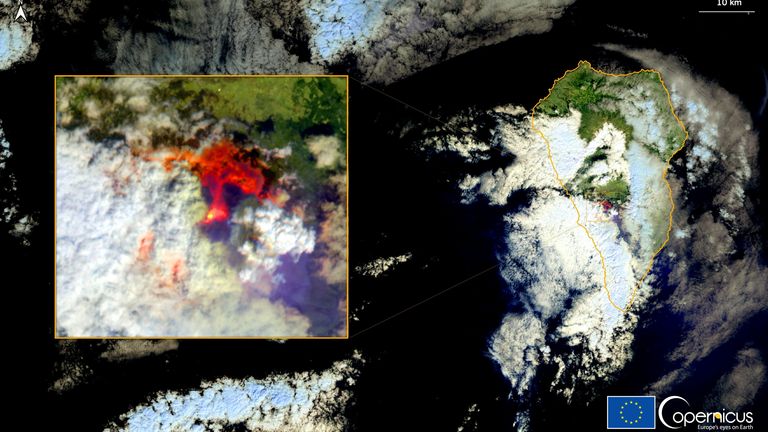Authorities have warned people on the island of La Palma of fresh dangers after a new volcanic vent blew open and rivers of unstoppable lava flowed towards more densely populated areas and the sea.
Residents were cautioned on Tuesday about earthquakes, toxic gases, volcanic ash and acid rain after several small earthquakes shook the Spanish island, which sits in the Canary Islands archipelago off northwest Africa.
How bad has the damage been?
The volcanic eruption on Sunday afternoon forced the evacuation of 6,000 people and unstoppable rivers of molten lava have destroyed around 190 houses and caused significant damage to farmland and infrastructure.
The island of 85,000 people is a popular tourist destination for Europeans.
Thousands of small earthquakes have happened in the days following the eruption.
How long will the eruption last?
The aftermath of the volcanic eruption could last for up to 84 days, the Canary Islands Volcanology Institute has said.
It based its calculation on the length of previous eruptions in the archipelago.
On Tuesday a new volcano vent opened up 3,000ft north of the Cumbre Vieja ridge, where the first eruption happened on Sunday.
Why is lava meeting the ocean so dangerous?
The flow of lava has slowed to around 120m (400ft) an hour and was not expected to reach the Atlantic Ocean until Wednesday, according to the head of the Canary Island Volcanic Emergency Plan, Miguel Angel Morcuende.
Angel Voctor Torres, the head of the Canary Islands government, said there would be a “critical moment” when the lava reaches the sea.
The rivers of molten rock, which are up to six metres (nearly 20ft) high, have a temperature exceeding 1,000C and could cause explosions and produce clouds of gas when they meet the sea.
Mr Torres reminded locals of the island’s last eruption in 1971, when one person died after inhaling the gas emitted as lava met the water.
Late on Tuesday, emergency services attempted to divert some of the lava by using front-loaders to clear a path for it to follow in the hopes of steering it away from properties. Officials said they did not know if it would work.
What dangers lie ahead?
A change in wind direction on Tuesday blew volcanic ashes, which irritate the eyes and lungs, over a vast area on the western side of the island.
The volcano has also been spewing out 8,000 to 10,500 tons of sulfur dioxide, which also affects the lungs, every day, according to the Volcanology Institute.
How is the government helping?
Mr Torres described the region as a “catastrophe zone” and said he would request funding to rebuild roads, water pipes and create temporary accommodation for families who have lost homes and their farmland.
Spain’s King Felipe VI and Queen Letizia will visit the island on Thursday.

